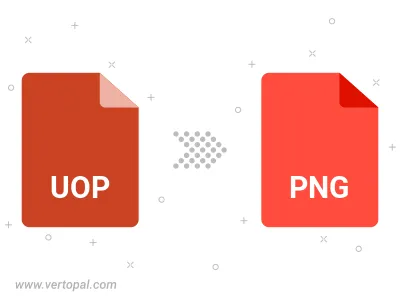Convert UOP to PNG
Convert UOP presentation documents to PNG format, edit and optimize documents online and free.

The UOP file extension stands for Uniform Office Presentation, an open document format developed for Chinese office productivity applications. It uses XML to describe presentations and stores them as compressed archives, similar to the OpenDocument format. UOP files are primarily used with OpenOffice Impress for creating and viewing presentations. Historically, the format was created to support Chinese language office applications and has been adopted by various office suites.
The Portable Network Graphics (PNG) file extension, established in 1996, serves as a widely-used raster graphics format that supports lossless data compression. Initially developed as a superior, patent-free replacement for the GIF format, PNG is prevalent in the IT industry for web design, digital photography, and complex graphics due to its capability to handle detailed images with transparent backgrounds and its extensive color range. Known for maintaining high-quality visuals without increasing file size significantly, PNG remains an indispensable tool in professional digital imaging and web development.
Select a UOP presentation document from your computer, or drag & drop it on the page.
Use any available convert tools on the preview page, and click Convert.
Once the convert is complete, you can download the final PNG file.

To change UOP format to PNG, upload your UOP file to proceed to the preview page. Use any available tools if you want to edit and manipulate your UOP file. Click on the convert button and wait for the convert to complete. Download the converted PNG file afterward.
Follow steps below if you have installed Vertopal CLI on your macOS system.
cd to UOP file location or include path to your input file.Follow steps below if you have installed Vertopal CLI on your Windows system.
cd to UOP file location or include path to your input file.Follow steps below if you have installed Vertopal CLI on your Linux system.
cd to UOP file location or include path to your input file.